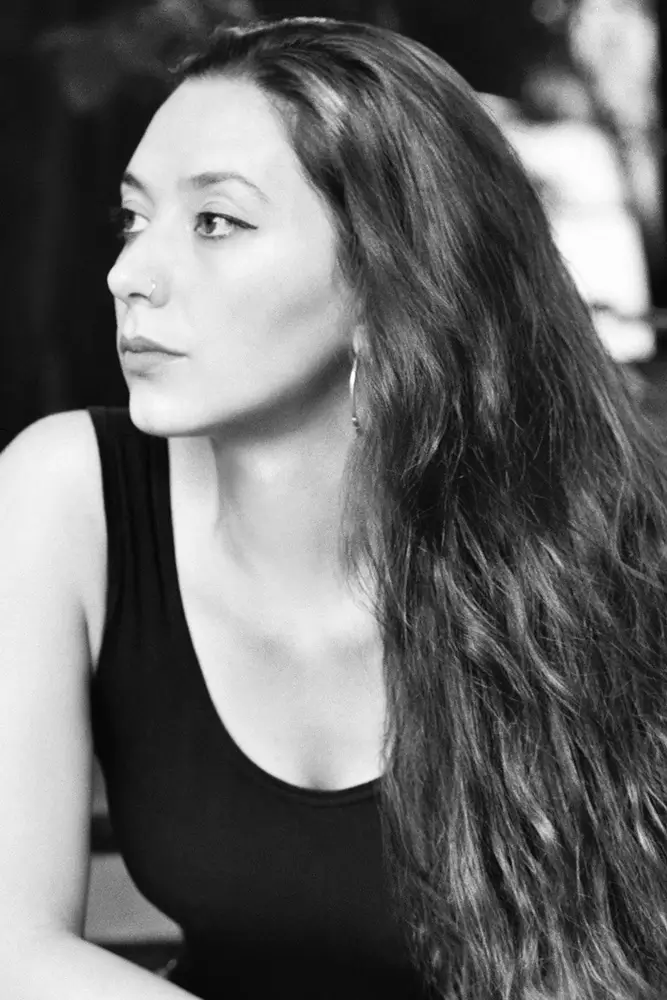Born in 1995 in Varese, Italy, Ludovica Limido is a documentary photographer whose work
centers on countercultures and human connection. After graduating from art school, her travels
through Australia and Southeast Asia deepened her need for photography.
In 2019, Ludovica was awarded a photography scholarship at Milan’s John Kaverdash Academy,
which led to new collaborations and recognition. Her projects explore diverse themes, from
life in small Italian villages to European body suspension subcultures, folklore, and the experiences
of adolescence in provincial settings. Her work delves into the complexities of belonging,
identity, and the interplay between individuality and group dynamics.
In 2023, she discovered an online community in the world of love dolls, inspiring her project
The Doll Next Door, which focuses on the companionship between humans and their synthetic
counterparts.
Her photography has earned her recognition in several competitions and festivals. In 2024,
Ludovica was a finalist at the InCadaqués Photo Festival, the Indian Photo Festival, the ND
Awards, the Golden Shot Awards, Les Boutographies, and was shortlisted for the 2024 Un/Fund
Artist Grant. In addition, she received honorable mentions at both the Passepartout Photo Prize
and the International Photography Awards, and was a finalist at the Gomma Grant Awards.
The Doll Next Door:
For centuries, humanity has been intrigued by the idea of artificial companionship. Rumors suggest
that as far back as the 1600s, sailors carried early versions of sex dolls crafted from cotton
and fabric on their long sea voyages. Despite the ambiguity surrounding their origins, the allure
of these synthetic companions has persisted through time.
In the modern era, the landscape of synthetic relationships has undergone a profound transformation.
Since 2018, catalyzed further by the upheavals of the Covid era, the adult doll market
has seen rapid growth, fostering a global community of individuals who opt for “synthetic” relationships.
Far from fitting the stereotype of isolated introverts, doll owners defy easy categorization. They
come from diverse backgrounds, span various age groups, and pursue a range of professions,
challenging societal norms with their embrace of unconventional connections.
Their homes become gateways to a secret, private world dedicated to their dolls; neat, compact
spaces filled with accessories, clothes, jewelry, shoes—everything their dolls might need if only
they were alive.
Despite the undeniable significance of these relationships, most remain shrouded in secrecy.
Fueled by societal stigma and misconceptions, many who are part of this subculture often find
themselves hiding it from even their closest friends and family.
Through private forums, blogs, and social media, doll enthusiasts build connections, share
advice, and celebrate the intricacies of their lives. These online networks serve as lifelines,
offering a sense of belonging in a world that often fails to understand their reality.
As technology advances, love dolls represent the brink of a new era—the emergence of genuine
robot companionship. With each innovation, the line between fantasy and human reality
blurs, offering a glimpse into a future where the boundaries of intimacy are redefined.
“The Doll Next Door” explores the deep emotional connections formed between individuals
and their synthetic counterparts, revealing how companion dolls serve as confidants, companions,
and even surrogate family members. Moreover, it delves into the concept of identity for
both doll owners and their synthetic companions.
Through this project, I aim to highlight the depth within these unconventional relationships and
bring to life a contemporary, romantic story that reflects something deeply human: our need for
connection, acceptance, and the desire to feel understood.
